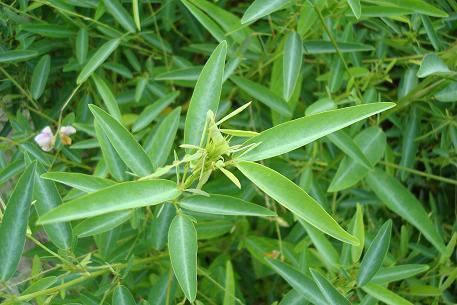Rank Species | Genus Codariocalyx Higher classification Codariocalyx | |
 | ||
Similar Codariocalyx, Desmodium, Adansonia grandidieri, Welwitschia mirabilis, Euphorbia obesa | ||
Telegraph plant codariocalyx motorius timelapse movement
Codariocalyx motorius (though often placed in Desmodium), known as the telegraph plant or semaphore plant, is a tropical Asian shrub, one of a few plants capable of rapid movement; others include Mimosa pudica and the venus flytrap.
Contents
- Telegraph plant codariocalyx motorius timelapse movement
- Codariocalyx motorius desmodium gyrans
- Usage
- References

It is widely distributed throughout Bangladesh, Bhutan, Cambodia, China, India, Indonesia, Laos, Malaysia, Myanmar, Nepal, Pakistan, Sri Lanka, Taiwan, Thailand and Vietnam. It can even be found on the Society Islands, a remote chain of islands in the South Pacific. It produces small, purple flowers. This plant has small, lateral leaflets which move at speeds rapid enough to be perceivable with the naked eye. This is possibly a strategy to maximise light by tracking the sun. Each leaf is equipped with a hinge that permits it to be moved to receive more sunlight, but the weight of these leaves means the plant must expend a lot of energy in moving it. To optimise its movement, each large leaf has two small leaflets at its base. These move constantly along an elliptical path, sampling the intensity of sunlight, and directing the large leaf to the area of most intensity. Another hypothesis has been offered that the rapid movements are intended to deter potential predators.

The common name is due to the rotation of the leaflets with a period of about three to five minutes; this was likened to a semaphore telegraph, a structure with adjustable paddles that could be seen from a distance, the position of which conveyed a message in semaphore, hence the common names.

The plant is described in detail in Charles Darwin's 1880 The Power of Movement in Plants.
Codariocalyx motorius desmodium gyrans
Usage

Due to its special characteristic that it can ‘dance’, the plant has been used as ornament in gardening, in which some are made as bonsais.

Apart from ornamental value, the plant also has medical value, due to its leaves, stems and roots containing small amounts of tryptamine alkaloids, especially DMT and 5-MeO-DMT.
